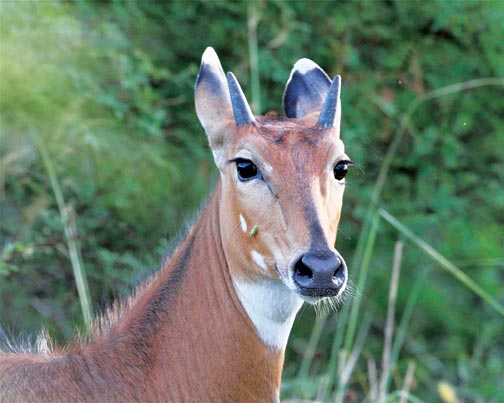HARLINGEN — Nilgai meat harvested from the Laguna Atascosa National Wildlife Refuge will no longer go solely to charity. Instead it will be processed and sold for profit by a Texas company.
Broken Arrow Ranch, located in Ingram northwest of San Antonio, will process and sell South Texas-harvested nilgai antelope meat at the ranch and online. Antelope meat on its website goes for $11 per pound for hamburger to $30 per pound for loin rack, much of which goes to restaurants.
Neither Laguna Atascosa nor the federal government will see any of the profits from the sale of nilgai meat.
“The refuge made the decision to do more helicopter culls (weekly) and we did not have the resources (volunteers or funding for the helicopter) to do events more than once per month,” Tom Snyder, founder of the San Antonio-based Trinity Oaks charity, said in an email.
Trinity Oaks handled the nilgai culls, meat processing and distribution to the needy through organizations such as Harlingen’s Loaves and Fishes.
“Because of that, the refuge made arrangements for Broken Arrow to take over the events with them donating 20 percent of the meat harvested to Trinity Oaks for distribution,” added Snyder, a Harlingen native.
Broken Arrow Ranch, in addition to selling antelope like nilgai, also sells venison, wild boar, quail and lamb. The processed meat yield from a single nilgai averages about 190 pounds.
The nilgai antelope is a non-native species and has been determined to be a prime culprit — white-tailed deer also carry the tick — in the spread of cattle fever ticks and the disease they carry called babeosis. The disease can be fatal to cattle and poses a major threat to Texas’s top agricultural commodity — beef.
A permanent tick quarantine zone exists for 10 miles into the United States along the Rio Grande from around Rio Grande City to the Gulf of Mexico. But the tick is spreading northward, and a month ago one was discovered in a cattle herd 100 miles from the permanent quarantine zone in Live Oak County.
A portion of Live Oak County has been added to what is called a Control Purpose Quarantine Area.
Willacy County is in a similar control quarantine area as well.
Southern Cameron County is in the permanent fever tick quarantine zone, and the northern part of the county is in what is called a Temporary Preventative Quarantine Zone established in 2014. Jim Wells and Kleberg counties also are in quarantine areas.
With its large nilgai antelope population, the movement of the cattle fever tick northward put Laguna Atascosa squarely in the middle of the outbreak. The refuge responded by using sharpshooters, both on the ground and in helicopters, to try to reduce the number of nilgai on the refuge in an attempt to slow or stop the cattle fever tick’s advance.
Federal officials at the U.S. Fish and Wildlife Service, which oversees the nation’s wildlife refuges, did not respond to emails seeking comment.




